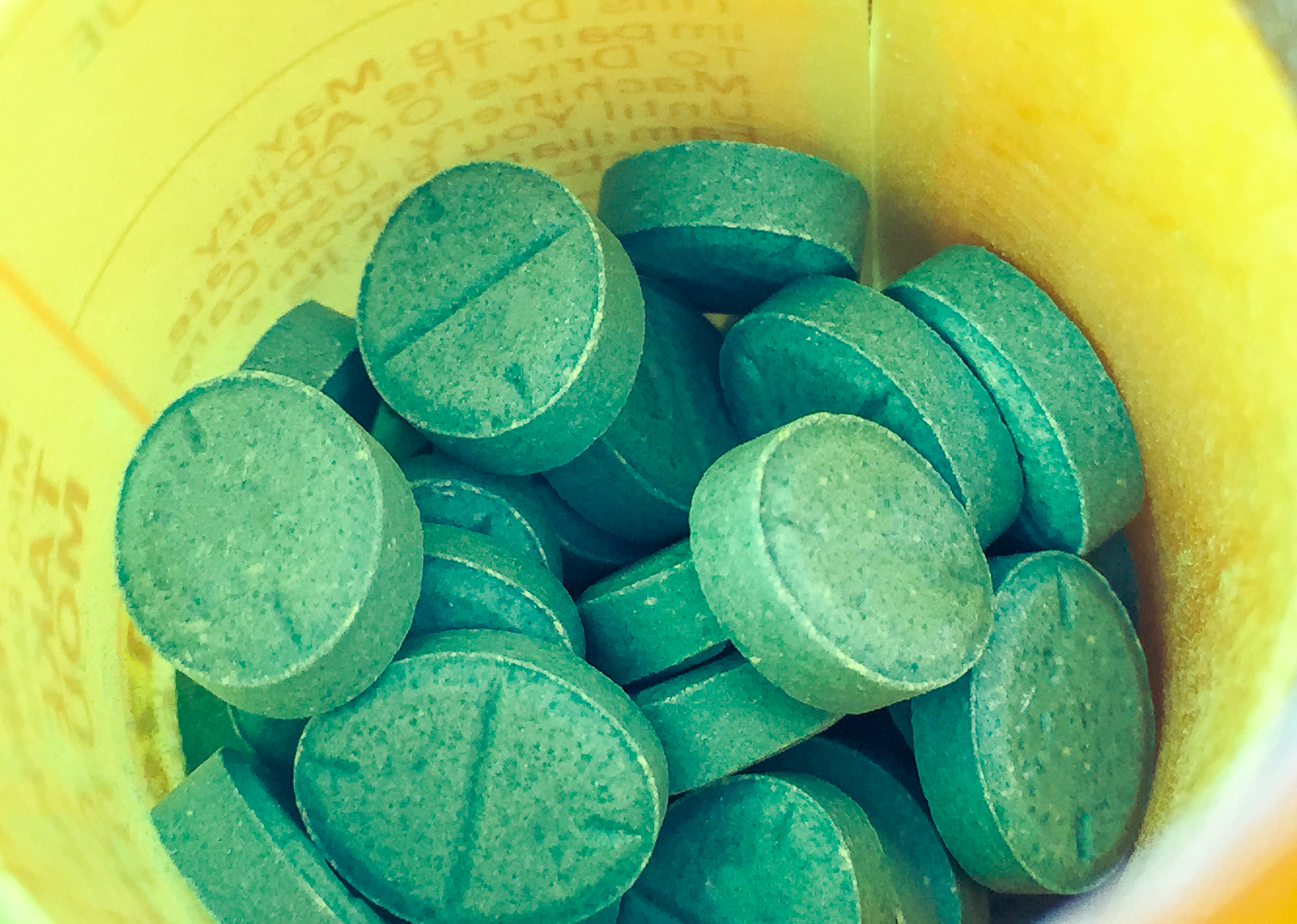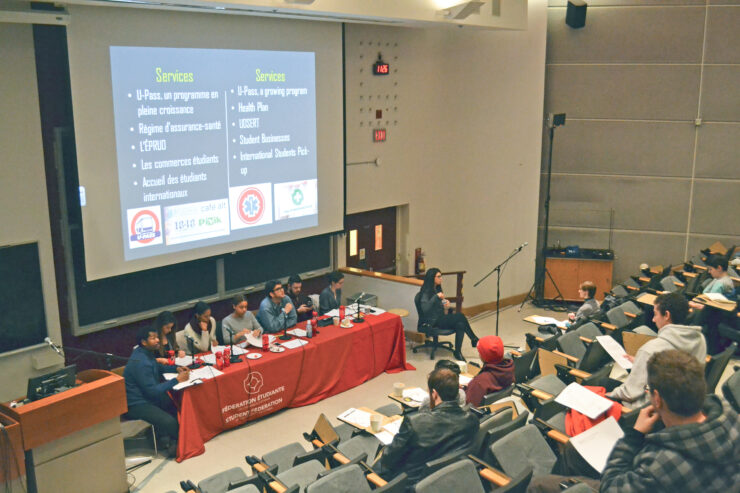Prescription med takes its toll on Canadian communities
With a recent string of drug overdoses in Kanata claiming the lives of teenagers Chloe Kotval and Teslin Russell, the fentanyl crisis is knocking on the door of the nation’s capital. Deaths and overdoses relating to the opioid fentanyl skyrocketed in British Columbia in 2016, but have also been slowly spreading across the country.
So, in order to shine a light on these growing rates of drug abuse, the Fulcrum sat down with Rick Sproule from the Drug User’s Advocacy League in Ottawa, professor William Ogilvie of the University of Ottawa’s Department of Chemistry and Biomolecular Sciences, and Kelly F. from the Ottawa Network for Peers Acting for Harm Reduction (ONPAHR) to get the straight facts about fentanyl.
The Fulcrum: Could you start off by telling us a bit about what fentanyl is, and why it’s so lethal?
Rick: What fentanyl is, is a synthetic opioid, an imitation of natural opioids but it’s much, much stronger. They use it in the healthcare industry, they use it in hospitals all over the place. It has incredible use in the medical industry, but because of its strength and its ability to mimic heroin, it’s being used to mix into other drugs.
William: Fentanyl is (also) an artificial painkiller. When manufactured and used properly, it is a safe drug. It becomes lethal when it is used in the wrong dose.
Most dosages are in the microgram range—an effective dose of pure fentanyl is so small it is actually difficult to see it. This amount of drug is extremely difficult to measure accurately, and small measurement errors can have huge effects with drugs like this. To ensure accurate dosing it must be diluted using fillers. If the drug is not mixed properly with the filler, or if the proportions used are not correct, the final product will have the wrong dosage. The people who make street drugs don’t have a quality-control department. Batches of street drug can contain anything, and can have variable amounts.
Kelly: Fentanyl is highly addictive. It has physically addictive properties, so when someone uses it for over ten days time they actually become physically addicted, and without the substance go through immediate acute withdrawal. And it’s very intense, a lot of people can’t deal with being sick so that’s why people are putting it in other drugs.
F: Is fentanyl overdose a new widespread problem for Canada, or has it caused problems in the past as well? Is it a newly created drug or have we seen variations of it before?
W: Fentanyl became a street drug in the 1970s. It was “marketed” as a synthetic version of heroin, sometimes called “china white.” It has caused overdoses from the first day it was on the street. Users would inject their “normal” amount of drug, unaware that they were injecting something that was hundreds of times more potent. The result was overdoses.
There are a number of drugs with similar molecular structures to fentanyl. Many were introduced to the street in the 1970s as part of the “designer drug” movement. They have variable potencies and cause overdoses when one is substituted for the other. Substituting one drug for another is a common practice in street drugs. Sometimes an ingredient is hard to get, or expensive. Dealers then switch to making a related drug, but will sell it as the original drug to maintain the “brand.”
K: People have been (overdosing) in our community from fentanyl for well over ten years now, but in the last five it’s got really, really bad.
F: Are there any social reasons behind the spread of this drug in particular?
R: It’s more than a social reason that it’s so popular, it’s because of the legal reasons really. (It’s) the way that the powers that be have tried to handle the growing use of opioids and opiates in our culture and our country.
What happened this time was they took a lot of oxycodone off the market and put back on the market a type of oxy that was not able to be injected, so it kind of made it useless, so everyone switched to stronger things like heroin and fentanyl.
K: They changed the oxy formula so they couldn’t be injected or couldn’t be snorted, they had to be taken orally. So that sort of created a desire for something that could be snorted and/or injected and smoked. Like heroin, fentanyl is a powder so it can come in a powder so it filled the void where other narcotics were no longer being prescribed or being used.
W: Economics. Fentanyl is cheap to make, and because it is so potent you don’t have to make a lot of it. Much easier to handle a few kilos of fentanyl than a few tons of heroin. The logistics are simpler, and so the profit margins are much higher for fentanyl than for drugs like heroin. People who make and sell street drugs are interested in money.
Safety is not an issue, their only “safety” concern is to stay below the radar. As long as the number of deaths is small, nobody notices. They don’t care if people die, they can always find other people to sell to.
F: Are youth more vulnerable to fentanyl’s effects?
R: Youth are more vulnerable in a certain way. The more hardcore drug users, the ones with long-term usage problems, we’re aware of it. We’re aware of the problem. But the younger generation, a lot of them will take what they think is just a percocet, at a party, hoping to get a good buzz off of it, and it has fentanyl in it, and it kills them.
So a lot of the recreational users nowadays are being exposed to fentanyl because it’s being cut into crack cocaine, it’s being cut into cocaine, it’s being cut into ecstasy, and it’s being fashioned into counterfeit pills, so you can’t be sure if it’s from a real pharmacy, or made in a lab somewhere in southern Ontario.
F: From a policy perspective, are there any ways the government can reduce these overdoses?
R: First of all, we have to grant immediate exemptions to all the supervised injection sites that have been applied for. There should be no hesitation in doing this.
We have to remove barriers to opioid substitution therapy. The way they distribute methadone and the way they regulate it, it’s very punitive. It’s a very old way of thinking of things. If you screw up and do some heroin and they find it in your urine, they’ll cut you off or cut you back so far that you go into withdrawals, and there seems to be no compassion in the way they do it.
K: Like prohibition, the war on drugs is a failure too. The war on drugs is nothing more than a war on people, and unfortunately it’s usually the simple drug user that ends up paying the most ridiculous (price) for something that well may be out of his or her control.
And different programs, heroin maintenance programs, stimulant maintenance programs. It’s far cheaper to create these programs, and help people that way, and help them to reduce and maybe eventually get into treatment then it is to incarcerate somebody. You know it’s very expensive to incarcerate people, it costs $184 a day they’re saying and that’s just basic housing.
F: What are your thoughts on safe injection sites as a method of overdose prevention? Do you think there are other effective alternatives Ottawa can implement?
R: The one thing we’re missing right now is somewhere safe to inject. The nature of hard drug addiction is that we all hide away in order to use, because it’s so illegal. So everyone’s kind of hiding away and not watching each other or taking care of each other.
The prescription heroin program that they have going at a clinic in Vancouver is very, very useful for the “hard to help” people. But it’s a very controlled environment, they inject right there in the clinic so there’s no chance of overdose, the drugs are pharmaceutical, so everything is very safe. So if we could expand this kind of treatment and these clinics that would be a huge step forward to ending the overdose crisis.
F: To close, do you have any crucial things about fentanyl or drug use that you would like students to take away?
W: Drugs are not like other consumer goods, you don’t really know what is in them. Nobody has a test lab in their basement, the only way to know what is actually in the product is to trust the source. Doctors and pharmacies are regulated and have to follow laws. Street pills, even if they look like legitimate pharmaceuticals, can contain anything. The only way to know what is actually in drugs is to trust the source. Buyer beware.
R: We have to change the way we think about drug addiction, because we think about it as a very criminal activity. It really is a healthcare situation, with people with problematic drug use it’s almost always because of a concurrent illness, or a mental disorder that drives you towards it and makes you crave the release that it gives you.
You can’t exactly tell people “don’t use drugs,” because that will drive them in the other direction. Universities could make drug testing kits available. Naloxone is coming out with a nasal form, rather than an injection, so you don’t have to worry about whether you know how to use a needle or not. Any students that are reading this, if you’re using or know someone who uses, go and get some naloxone.
K: Our organization, ONPAHR, we currently have test kits, it’s to detect fentanyl presence in substances, it doesn’t give you levels or how strong a dose is. These tests can also be used, 36 hours (later), as a urine screen as well. So if somebody was told they were given this, and suspect after using that it was fentanyl, they could test the urine as well and see if it was fentanyl or not.
I would just like to say that this isn’t a new issue, and it certainly has gotten worse. I don’t think people in Ontario are ready for what’s to come. What they’re facing out in B.C. is what we’re soon to be facing out here unless we start implementing some initiatives.





